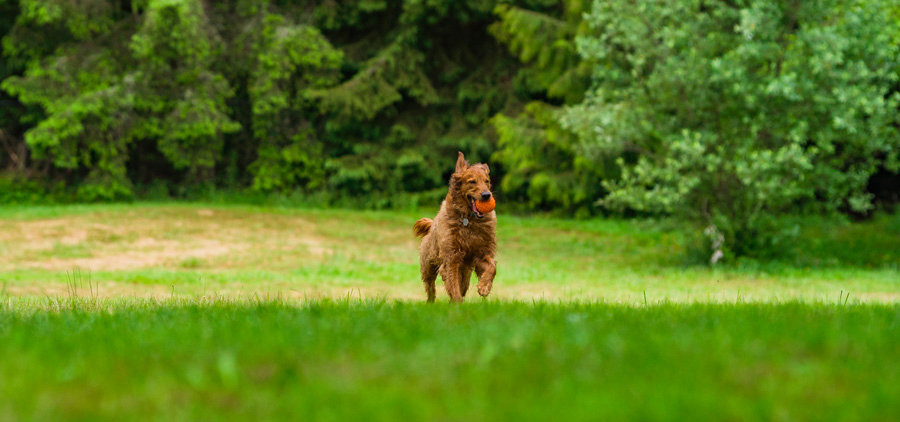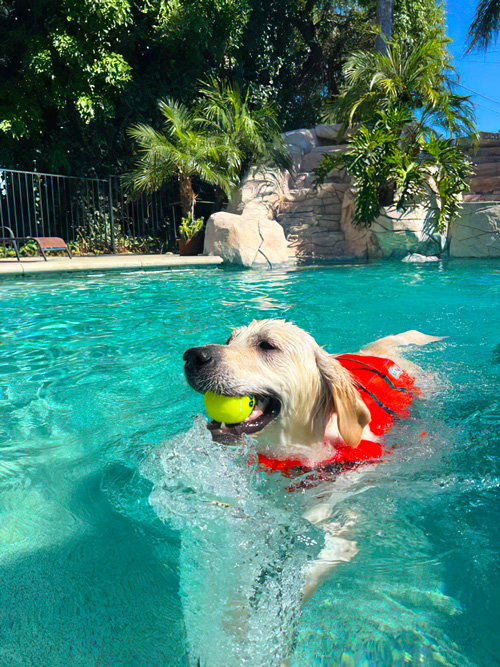What Is a Reactive Dog? A Practical Guide for Owners

Does your dog suddenly transform into a barking, lunging Tasmanian devil on walks? It's stressful for both of you. If this sounds familiar, you might have a reactive dog. Understanding what is a reactive dog is the first step to calmer walks. We'll explore the common triggers and give you actionable strategies to manage and modify this behavior. Let's turn those stressful walks into enjoyable outings.
What’s going on? How can you work through this reactive behavior with your companion? Will you ever be able to fully enjoy your neighborhood walks or embark on even more exciting adventures?
Turns out reactivity is a common behavior issue. (More than 80 percent of dogs have some sort of behavioral problem per a recent Forbes survey.) Here’s a look at a common dog reactivity chart to help you better track your canine companion’s emotions. Learning about the green, yellow, orange, and red reactivity zones will help you understand how your dog is feeling in a given moment and respond accordingly!
You’ll make reactivity training progress in no time.
First things first: What is dog reactivity, exactly?
While every living animal is constantly “reacting” to its environment—you might put on a sweatshirt when you notice you’re cold or head to open the door when you hear a knock—“reactive” is used in the dog training world to describe pets who overreact to stimuli in their environments.
Reactivity generally encompasses a range of undesirable aggressive or defensive behaviors (barking, growling, lunging, jumping, pulling, and so on) in situations that typically don’t warrant them in our minds (triggers are behaving normally in a non threatening way) but that are overwhelming or scary to our dogs.
Basically: Your puppy who woofs once or twice when startled? They wouldn’t be diagnosed with reactivity. Up to a certain point, vocalizations are a normal part of canine communication! A dog who barks, growls, and lunges at every other animal they see out on a walk, on the other hand? They would be considered reactive.
Due to genetic instincts in distinct breeds, some types of dog might be more prone to reactivity than others. High-energy breeds (especially those bred for herding work) like Australian shepherds, Australian cattle dogs, German shepherd dogs, and border collies often display signs of reactivity. Companion dog breeds might be less prone to reactivity. (Remember that ever dog is an individual, though—and many modern dogs are made up of several separate breeds. Even a popular breed for families, like the labrador retriever, can still struggle with unwanted behaviors.)
Seemingly aggressive behavior on leash can usually be identified as either fear-based leash reactivity or frustration-based leash reactivity.
Key takeaways
- Recognize your dog's reactivity threshold: Learn the subtle cues that indicate your dog is approaching their limit. This awareness helps you prevent reactive episodes by managing their exposure to triggers (through simple lifestyle changes, like adding visual barriers—more on management approaches later). Body language knowledge can also enable you to help non-reactive dogs stay that way in the long run.
- Use the Dog Reactivity Chart as a guide: The color-coded zones provide a clear visual representation of your dog's emotional state, allowing you to respond effectively in any given situation.
- Focus on positive reinforcement: Build your dog's confidence by rewarding calm behavior and creating positive associations with their triggers. Celebrate small victories and remember that animal behavior progress takes time.
Reactivity versus aggression: Understanding the difference
While sometimes used interchangeably, reactivity and aggression are distinct. Reactivity stems from fear or anxiety, while aggression is a deliberate attempt to inflict harm. Think of a reactive dog as one who barks and lunges at a stranger out of fear, versus an aggressive dog who bites with the intention to cause pain. It's important to note that while reactivity can escalate into aggression if not addressed, understanding the underlying motivation is key to effective management and training.
Is reactivity a medical condition?
It's important to understand that "reactivity" isn't a formal medical diagnosis, but rather a description of a dog's behavior. This behavior often manifests as excessive barking, lunging, or growling in response to specific triggers. Instead of thinking of reactivity as an illness, consider it more of an umbrella term covering a wide range of reactions.
This means that while behavior medicine might be part of addressing your dog's reactivity—you can learn more in our article about anxiety medication for dogs—the core treatment is behavior modification training.
Why do some dogs behave reactively?
Several factors can contribute to reactivity, including genetics, early experiences, improper or lack of socialization, and environment.
- Some breeds, like herding dogs, might be genetically predisposed to certain reactive behaviors.
- Negative experiences, such as trauma or lack of proper socialization during puppyhood, can also play a significant role in your dog's adult behavior.
- Even a dog's current environment and daily routine can influence their reactivity. For example, a dog who isn't getting enough exercise or mental stimulation might be more prone to reactive outbursts. A combination of fear, excitement, and frustration can all play a role to make your dog's behavior worse.
A well-adjusted dog will typically remain neutral in most situations, so if your dog is frequently reactive (and you find yourself feeling overwhelmed in stressful situations) it's worth exploring the potential underlying causes with a certified professional dog trainer. Finding safe and enriching spaces for your dog to explore, like the ones listed on Sniffspot, can also contribute to improved behavior and reduced reactivity.
What is a reactivity trigger?
Your dog’s trigger stimuli are the things that cause them to react. Dogs might become reactive to just about anything, so there’s no such thing as a comprehensive list. That said, some common triggers—for both frustration-based dog reactivity and fear-based dog reactivity—are:
- Adult humans (especially strangers, people wearing strange clothing your dog hasn’t seen before or that is associated with a bad experience, or people approaching in a certain way)
- Children, who can move quickly and erratically
- Other dogs
- Animals like cats, rabbits, squirrels, and birds
- Fast-moving object like cars, bikes, or skateboards
Some dogs react to their triggers in all situations (for example, all dogs they see outside their home) while other dogs only react to more specific images (like pointy-eared dogs directly approaching them at a certain distance).
Causes of reactivity to specific triggers are broad. Some dogs have a negative experience during their critical socialization period. Others struggle with a genetic component. Sometimes reactivity appears without warning signs—in other dogs, reactive behaviour gradually builds over time. Every pup and situation is different.

What is your reactive dog’s reactivity threshold?
Your dog’s reactivity threshold is the point where they fully react to their triggers. This when they actually start to display reactivity in obvious ways: When a dog is under threshold, they’re able to control their behaviors and be aware of their surroundings (even if they seem a little aroused, nervous, or on edge). When they’re over threshold, though, they’re reacting from fear or a predatory instinct.
The best way to work with a reactive dog is to keep them under threshold as much as possible. You don’t want to give them a chance to show their reactive behavior. This usually means working at a comfortable distance from the trigger where your dog knows it’s there but isn’t overwhelmed. This is called their critical distance or sub-threshold distance.
If you’re able to control the trigger’s intensity and duration, that can work too (reputable dog trainers note that this is just usually a little more difficult if you aren’t in a controlled training set up).
Put simply: You don’t want your reactive pup to have a reaction at all if possible! When a dog goes over threshold, it can take a few days—or even a full week—for their bodies to come down from the cortisol and adrenaline highs. It’s important to be extra conscious of any additional stressors during this period! (The ongoing suffering of reactivity, for both pups and owners, is real.)
This article addresses how to tell if your dog is at or above their threshold in a certain situation—their level of reactivity—and what to do to help them feel better.
For more information on dog reactivity in general, take a look at the other blogs in our Dog Reactivity category:
- Leash Reactivity: Understanding and Fixing It
- How to Train a Reactive Dog: A Beginner’s Guide
- How to Socialize Your Reactive Dog
- Guide to Fear Aggression in Dogs
The critical distance: Understanding your dog's limits
A key concept in managing reactivity is understanding your dog's "critical distance," sometimes called their "sub-threshold distance." This is the distance at which your dog can remain calm and under threshold in the presence of a trigger. Think of it as their personal bubble of comfort. Inside this bubble, they can process the stimulus without becoming overwhelmed and resorting to reactive behaviors.
Finding your dog's critical distance requires careful observation and a willingness to experiment. Start by identifying their common triggers—whether it's other dogs, people, or specific objects like cars or bikes. Then, in a controlled environment, gradually introduce your dog to the trigger at a distance where they show no signs of reactivity. This might involve using a long leash in a quiet park or observing their reactions through a window. If you're looking for a safe, controlled environment to work with your dog, consider booking a private Sniffspot.
As your dog remains calm, slowly decrease the distance to the trigger, closely monitoring their body language. Look for subtle signs of stress or anxiety, such as lip licking, yawning, whale eye (showing the whites of their eyes), or a tucked tail. The critical distance is the point just before these stress signals appear—the sweet spot where they're aware of the trigger but not yet overwhelmed by it.
This distance will vary depending on the trigger and the environment, so be prepared to adjust as needed. For example, a dog might tolerate a closer distance to another dog in a familiar, secure space than on a busy street. Understanding your dog's critical distance empowers you to prevent reactive episodes. By maintaining this distance, you avoid pushing your dog over their threshold, allowing them to stay calm and learn. This is essential for effective reactivity training, as it creates a positive learning environment where your dog can focus on building new associations with their triggers. For more tips on training a reactive dog, check out our list of top dog trainers.
Dog Reactivity Chart: Understand when your dog is below, at, or over their threshold

The Green Zone: Your reactive dog is below their threshold
As mentioned above, you want your dog to stay below threshold as much as possible! When in the green zone, your dog shouldn’t appear reactive at all—they’re able to think clearly and stay calm.
Signs your reactive dog is below threshold
When under their reactivity threshold, your dog can typically:
- Sniff and engage with the surrounding environment in a normal way
- Follow your cues without hesitation (provided that you’re practiced them in a range of situations first)
- Take treats from you
- Maintain a loose leash
- Otherwise show relaxed behavior
What to do if your reactive dog is in the green zone
Celebrate! Keep doing what you’re doing. A dog in the green zone of the reactivity chart is in a great mental headspace to learn and manage their emotional responses—you’re helping them build a new positive association with their triggers from a comfortable distance.
While in the green zone, you can:
- Simply let your dog observe from a place of safety (like outside a city dog park where they can watch fellow canines interact)
- Practice fun tricks both as alternative behaviors and a way to provide some physical exercise
- Play a short game (either with a favorite toy or personal play)
- Take note of the distance and intensity of your dog’s triggers to use as a starting point for your next training sessions (remember that reactions vary day by day and you might have to adjust—your progress won’t always be linear)
The Yellow Zone: Your reactive dog is at or approaching their threshold
As your dog approaches their reactivity threshold, it’s important to pay attention to subtle body language signals. Not all stress is bad—some small amounts can even be helpful in the learning process, such as what’s described in the Yerkes-Dodson law—but you do not want to overdo it. Remember when we mentioned that it can take multiple days or even a week for your dog to fully come down after an intense reaction experience? Err on the side of caution when in doubt!
Signs your reactive dog is in the yellow zone
When approaching their threshold, your dog will likely:
- Stop sniffing the surrounding environment
- Be alert and even a little focused on their reactivity trigger
- Stand a little more stiffly (though without a completely rigid body)
- Still be able to follow your cues and take treats from you
What to do if your reactive dog is showing some stress
If your dog is in the yellow zone, you can:
- Play reactivity games like engage disengage
- Practice fun tricks or play a short game
- Take note of the distance and intensity of your dog’s triggers to use as a starting point for your next training sessions—it can be particularly helpful to practice at different distance thresholds from public dog parks
- Make sure to keep an eye on the trigger and your dog’s body language so you don’t accidentally push them into the orange zone

The Orange Zone: Your dog is over threshold and needs your help
When your dog reaches the orange zone, two main things happen. The first is that they’re no longer able to learn effectively or build positive memories or associations with their triggers. All they’ll be able to remember is their stress! The second is that your dog is likely mere moments away from having a full-blown reaction with barking, lunging, growling, or their other typical reactive behaviors.
Signs your reactive dog is over threshold
When your dog is in the orange zone, they:
- Are completely focused on their trigger
- Have a very stiff body, possibly with raised hackles
- Might be pulling on the leash or straining towards their trigger
- Often aren’t able to follow your cues or take food from you
- Can start to growl or “huff” under their breath
What to do if your reactive dog reaches the orange zone
If your dog is over threshold, you should follow these steps:
- Get out of the situation as quickly as you can
- Use management techniques to reduce your dog’s stress or help distract them from their trigger as you make your exit—this is imperative to prevent your pup from forming further negative associations
- Once safely out of the triggering environment, help your dog decompress through sniffing, searching for and eating tasty treats, or some easy enrichment activities to return to a positive experience (light aerobic exercise can really help your dog reset after getting stuck in their reactive behaviours)
- Reflect on what happened and how you can adjust your training plan next time to prevent your dog from crossing their reactivity threshold
The Red Zone: Your reactive dog can’t think clearly at all
Your dog is in the red zone when they’re fully reacting to their triggers. At this point, your pup isn’t able to pay attention to you at all. It’s not that they’re ignoring you on purpose—they’re just so overwhelmed that it’s impossible to listen to your cues during their intense reaction.
We know it can be frustrating, but remember that your dog needs your help in this situation, not your judgment!
What to do if your reactive dog is in the red zone
- Simply get out of their as quickly as you can
- Do not yell at or otherwise punish your dog
- Be prepared to provide several decompression opportunities over the next few days, which might include backing down on your dog’s regular exercise
- Remember that these things happen—you are not a bad owner!
- Reflect on the situation and consider what you can learn for next time
Avoid any form of punishment, as it will only worsen the reactivity. Your dog isn't misbehaving; they're experiencing an emotional overload. Punishment is harmful and ineffective when dealing with reactivity. It won’t teach your dog to make better choices, and it can damage your relationship and erode their trust in you. Remember, reactivity stems from underlying fear or anxiety. Aggression is a deliberate attempt to inflict harm, a different behavior entirely. When your dog is in the red zone of the dog reactivity chart, they’re so overwhelmed that it’s impossible for them to listen to your cues. They aren’t ignoring you; they physically and emotionally can’t process what you’re asking. Focus on creating a safe and positive experience for your dog, rather than resorting to punishment.
Reactive dog training is hard work—but it’s worth it
Understanding your dog’s threshold and avoiding reactive episodes will help you live a better life together. To train through your pup’s dog reactivity, you need to rehearse healthy habits at a safe distance, prevent excessive stress, and celebrate your progress over time! The entire reactive dog community is cheering for you.
When in doubt about your dog’s reactivity training? Reach out to a local force-free trainer for in-person guidance or a certified professional who offers virtual sessions to guide you from afar. Reactive dog trainers can help you with frustration-based reactivity, fear-based reactivity, and your own emotional responses as your dog’s person. Professional trainers are worth their weight in gold when it comes to behavioral problems!
Managing reactivity: Practical tips and techniques
Managing a reactive dog involves a combination of avoiding triggers and implementing training techniques. While you’re working on training, try to minimize exposure to known triggers as much as possible. This might involve adjusting your walking route to avoid busy streets or using window coverings to block visual stimuli. For example, if your dog reacts to other dogs and you know there’s a popular dog park on your typical route, consider taking a quieter side street instead. Small changes can make a big difference.
Training a reactive dog: Building trust and confidence
Training focuses on changing your dog's emotional response to triggers. Desensitization and counter-conditioning are common approaches. Start with the trigger at a distance where your dog remains calm—remember their critical distance?—and gradually decrease the distance while rewarding calm behavior. Praise, treats, or a favorite toy can all be effective rewards. Teaching an alternative behavior, like looking at you on cue, can also be highly effective, giving your dog something else to focus on besides their trigger. Look at me cues can be practiced in a variety of situations.
Calming strategies for reactive dogs
Creating a calming environment for your dog can significantly reduce their overall stress levels. This might include providing a safe space, like a crate or a quiet corner, using calming music or pheromones, and incorporating relaxation exercises into their routine. Regular mental and physical enrichment can also help channel their energy in positive ways. Consider puzzle toys, sniff walks (where your dog gets to follow their nose), or even a fun game of fetch at a safe, enclosed Sniffspot. Finding ways to help your dog relax at home can improve their overall well-being.
Finding professional support
Working with a reactive dog requires patience, consistency, and realistic expectations. It's perfectly normal for a dog not to be friendly with everyone, and focusing on your dog's individual comfort level is key. Remember that you’re not alone in this journey! If you're struggling, don't hesitate to seek professional help. A certified professional dog trainer, veterinary behaviorist, or experienced veterinarian can provide personalized guidance and support tailored to your dog's specific needs. They can also help rule out any underlying medical conditions that might be contributing to the reactivity. Finding the right professional can make all the difference.
More related reading: Improve your dog’s reactive responses
Sniffspot has an entire blog category dedicated to our wonderful companions who struggle with dog reactivity. (Our private dog parks were in large part designed specifically to accommodate these pups!)
- All articles categorized under dog reactivity
- How to train a reactive dog beginner’s guide
- Dog training 101
- How to socialize your reactive dog
- Definitive guide: What is dog reactivity?
- How to enable a reactive dog to live a full life
- When and how to think about medication for anxious dogs
- Where can you bring your reactive dog?
Trainer review of this article
There is so much misinformation out there, we want to make sure we only provide the highest quality information to our community. We have all of our articles reviewed by qualified, positive-only trainers.
This is the trainer that reviewed this article:
Shannon Finch
AnimalKind Training
M.Ed. Humane Education Karen Pryor Academy.
Certified Training Partner.
Certified Tellington TTouch and TTEAM Practitioner
Frequently Asked Questions
Is my dog's reactivity my fault?
- It's easy to feel blamed for your dog's reactivity, but remember that many factors contribute to this behavior, including genetics, early experiences, and environment.
- Focus on understanding your dog's triggers and learning effective management strategies rather than dwelling on blame. Finding safe and enriching spaces for your dog, like those on Sniffspot, can be a positive step.
How can I tell the difference between reactivity and aggression?
- Reactivity is often rooted in fear or anxiety and is a heightened response to a perceived threat.
- Aggression, on the other hand, involves an intent to cause harm. A reactive dog might bark and lunge out of fear, while an aggressive dog will bite with the intention to injure. Reactivity can escalate into aggression if left unaddressed, so early intervention is key.
My dog only reacts in certain situations. Is that still considered reactivity?
- Yes. Reactivity isn't always consistent. Some dogs react to triggers in all situations, while others only react under specific circumstances, like when on a leash or in a new environment.
- Even occasional reactions are still considered reactivity and can benefit from training and management.
Will my reactive dog ever be "cured"?
- While some dogs may eventually stop reacting altogether, the goal of reactivity training is often management rather than a complete cure.
- Focus on helping your dog feel safe and comfortable in triggering situations, equipping them with coping mechanisms to better handle their emotional responses. Consistency and patience are key.
What if I've tried training and nothing seems to work?
- Don't give up! Reactivity training takes time and consistency.
- If you're struggling, consider consulting with a certified professional dog trainer or veterinary behaviorist. They can assess your dog's individual needs and develop a tailored training plan. They can also help identify any underlying medical conditions that might be contributing to the reactivity.
Most recent articles
Related articles
Top dog guides per area
Dog training guides

Dog Food Aggression: Why You Shouldn't Punish It
Does your dog ever growl when you walk by their food dish? Maybe they get possessive of treats, carrying them far away and giving you side-eye when you start to approach — or snarling at your other pets or children if they get too close.

Best Dog Fields in the US: 25+ Wide-Open Spaces for Your Pup to Run Free
The best dog fields in the US offer something that traditional enclosed parks simply can't match: acres of open space where your pup can truly stretch their legs and run at full speed. From Colorado's 470-acre prairie meadows to Tennessee's award-winning "Outback," these wide-open spaces allow dogs to roam, explore, and exercise naturally while engaging instincts that cramped urban parks suppress.

The Ultimate Guide to Scent Training for Dogs
Your dog's nose is an amazing tool. Did you know they have 40 times the olfactory receptors than humans? Scent training for dogs taps into this superpower, turning everyday moments into exciting sniff-fests. It's enriching for all types of dogs – reactive, shy, or simply adventurous. Ready to explore the world of scent work for dogs? Let's get started.

Service Dog Training Costs: DIY vs. Pro
More than 80 million Americans rely on their service dogs to help them navigate the world. Task-trained assistance animals perform a huge range of life-changing—in many cases, life-saving—services: These dogs act as eyes for visually impaired handlers, provide mobility support, alert to seizures and blood sugar crashes, interrupt anxiety attacks, remind their people to take medications, and so much more.

How to Deal With Puppy Potty Training Regression
You thought those dreaded middle-of-the-night potty breaks were over. You were finally free from cleaning up puppy puddles. Then, suddenly, your furry friend starts having accidents again. It's frustrating, right? This puppy potty training regression is more common than you think. Don't worry; we'll help you get your pup back on track. We'll cover the common causes, offer practical solutions, and give you actionable steps to tackle this challenge together.

Dirty Dog Syndrome: Causes, Solutions, and Prevention
It's a cringe-worthy moment every dog owner dreads: your furry friend chowing down on something truly disgusting. If your dog has a penchant for poop, you're dealing with coprophagia. It's more common than you think, and thankfully, often manageable. This article explores the reasons behind dirty dog syndrome, from instinct to learned behavior. We'll also give you practical tips to help break this unpleasant habit.

How to Train Your Rescue Dog: A Complete Guide
* All Sniffspot articles are reviewed by certified trainers for quality, please see bottom of article for details *
Dog enrichment guides

Best Dog Water Parks in the US: 15+ Amazing Splash Destinations for Your Pup
Do you have a water-loving dog looking to burn some energy? There are countless dog parks to visit throughout our country — but some of them become far too hot in the midday sun to be safe for your pets to play. That’s why we’ve put together a list of some of the best dog water parks throughout the United States! At these locations, your pup can frolic, splash, and swim to their heart’s content.

Best Dog Fields in the US: 25+ Wide-Open Spaces for Your Pup to Run Free
The best dog fields in the US offer something that traditional enclosed parks simply can't match: acres of open space where your pup can truly stretch their legs and run at full speed. From Colorado's 470-acre prairie meadows to Tennessee's award-winning "Outback," these wide-open spaces allow dogs to roam, explore, and exercise naturally while engaging instincts that cramped urban parks suppress.

Best Toys for Herding Dogs: Keeping Your Pup Happy & Engaged
Herding dogs are amazing, intelligent companions. But that also means they need more than just a simple game of fetch. Finding the right toys for herding dogs is key to keeping them happy and stimulated. This article explores some of the best toys for herding dogs, including options specifically for breeds like Border Collies and Australian Shepherds. We'll help you discover the perfect herding toys for dogs to tap into their natural instincts and keep them entertained for hours.

Tough Dog Toys for Aggressive Chewers: A Practical Guide
Does your dog destroy every toy you give them? Is your house littered with the remnants of plush toys? Are you tired of wasting money on "indestructible" dog toys for aggressive chewers that don't last? Then this post is for you. We'll cover everything you need to know about finding the best dog toys for aggressive chewers, so you can finally give your pup something safe, durable, and fun.

Daily Exercise Calculator: How Much Exercise Does Your Dog Need?
Everyone knows dogs need exercise, but how much is enough? Walks are great, but creating a truly balanced fitness plan means understanding your dog's specific needs. This post helps you develop a daily exercise calculator for your dog, considering breed, age, and lifestyle. We'll cover fun activities, understanding exercise intensity, and recognizing when your pup has had enough. Let's create a plan that keeps your dog happy and healthy!

Complete Guide To Herding With Dogs
* All Sniffspot articles are reviewed by certified trainers for quality, please see bottom of article for details *

Dog Enrichment Activities: The Ultimate Guide
Ever feel like your dog is restless or bored? They may be getting enough exercise, but still need more. That's where enrichment activities for dogs come in. Giving your dog opportunities to sniff, explore, and problem-solve can make a world of difference. Whether you have a puppy, adult, or senior dog, enriching their environment is key for their well-being. Let's explore how to add cognitive enrichment for dogs, even tailoring activities to your dog's breed with breed specific enrichment and fun enrichment games for dogs.
Dog reactivity guides

Rottweiler Aggression: Truth vs. Myth
Many dogs have gotten a bad reputation over the years for being "dangerous breeds." Rottweilers are among them. Like pit bulls and other large, blocky-headed types of dogs, these powerful and beautiful animals are often assumed to be aggressive.

Best Dog Fields in the US: 25+ Wide-Open Spaces for Your Pup to Run Free
The best dog fields in the US offer something that traditional enclosed parks simply can't match: acres of open space where your pup can truly stretch their legs and run at full speed. From Colorado's 470-acre prairie meadows to Tennessee's award-winning "Outback," these wide-open spaces allow dogs to roam, explore, and exercise naturally while engaging instincts that cramped urban parks suppress.

What Is a Reactive Dog? A Practical Guide for Owners
Does your dog suddenly transform into a barking, lunging Tasmanian devil on walks? It's stressful for both of you. If this sounds familiar, you might have a reactive dog. Understanding what is a reactive dog is the first step to calmer walks. We'll explore the common triggers and give you actionable strategies to manage and modify this behavior. Let's turn those stressful walks into enjoyable outings.

How to Socialize a Reactive Dog: A Step-by-Step Guide
Does your dog display reactivity to other pets or people? Maybe they’re a new rescue pup and are still settling into your home. Or they were sick growing up, so you missed their critical socialization period. Possibly they’ve had a bad experience after being raised as a normal puppy.

What Is a Reactive Dog? A Complete Guide
Is your dog overly excited or fearful around other dogs? Do they bark, lunge, or whine? You might have a reactive dog. Many dog owners face this challenge. Understanding what a reactive dog is is the first step to helping them. This guide explores the common causes of dog reactivity, explains what makes a dog reactive, and offers practical tips and resources. Let's work together to build a stronger bond with your dog and enjoy stress-free walks.

9 Best Online Communities for Reactive Dog Parents
Does your dog's reactivity make walks stressful? You're not alone. Many dog owners face similar challenges. This guide offers practical advice and support for managing reactivity, including finding the best online dog training for reactive dogs. We'll connect you with reactive dog support groups, share training tips, and explore resources like the best dog training app for reactive dogs. Let's build a stronger bond with your dog, together.
* All Sniffspot articles are reviewed by certified trainers for quality, please see bottom of article for details *
How To Groom a Reactive Dog
* All Sniffspot articles are reviewed by certified trainers for quality, please see bottom of article for details *
Sniffspot community guides

The State of Public Dog Parks Across the United States
From 2009 to 2020, there was a 40 percent increase in the development of public dog parks. Designated spots for canine exercise have become commonplace in every major city in North America — many pet owners won’t even consider renting an apartment that doesn’t have its own fenced-in pet area for their canine companions.

Best Dog Fields in the US: 25+ Wide-Open Spaces for Your Pup to Run Free
The best dog fields in the US offer something that traditional enclosed parks simply can't match: acres of open space where your pup can truly stretch their legs and run at full speed. From Colorado's 470-acre prairie meadows to Tennessee's award-winning "Outback," these wide-open spaces allow dogs to roam, explore, and exercise naturally while engaging instincts that cramped urban parks suppress.

How This Family is Affording Their Dream Property Through Renting it Hourly to Dogs
Thousand Oaks, California has been a safe haven for Sniffspot host, Jen, since childhood. Having grown up in busy Santa Barbara, Jen, an introvert from an early age, would seek out solitude and serenity away from tourists attractions and droves of people visiting from elsewhere. “My grandparents own 60 acres about a 30 minute drive from here, and I grew up spending every summer and every holiday visiting them on the ranch,” Jen explained. “In Santa Barbara, we wouldn't go to the beach on the weekend because that's where everybody was, so you'd find places off the beaten path where the tourists weren't. For me, the ranch was just my happy place.”

Host Tips: Ellen K. What Makes Sniffspot Successful for Me
Ellen is the host of Country Pasture Getaway, one of Sniffspot's most popular sniff spots. She has taken the time to write up the lessons she has learned about how to be a great sniff spot host.

How this Oregon Farmer is Making a Business From Renting Her Land to Dogs
Just 20 minutes outside of the busy city of Portland, Oregon, and settled right on the banks of the Columbia River, you’ll find what countless visitors have flocked to the area in search of – mountain views, crisp, clean air, and running water for miles. What you might not expect to find, however, is a hidden oasis designed just for dogs and their people, owned and operated by a farming couple and enjoyed by visitors on two legs, and four.

Host Tips: Fran T. Providing Great Guest Service at our Spot
Fran is the host of Ranch Setting, one of Sniffspot's most popular spots. She has taken the time to write up the lessons she has learned about how to be a great Sniffspot host.

How Sniffspot Helped a Nervous Rescue Work Through His Fears and Change His Family’s Life
This is the story of a family and dog rescuing each other.
Top dog trainers in the US
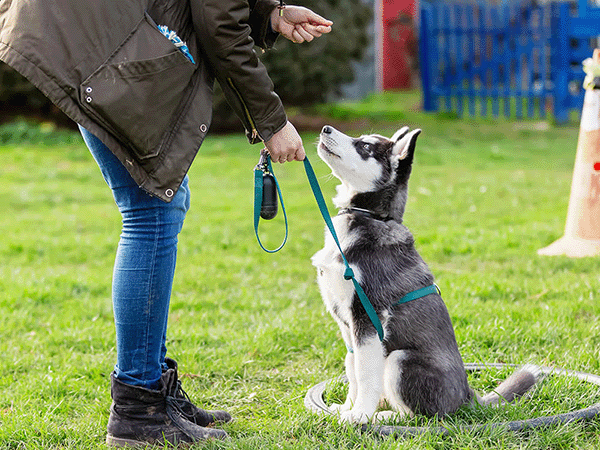
The Best Dog Trainers in the United States of 2025
This is a list of the top dog trainers in the United States, based on votes from the Sniffspot community and the general public.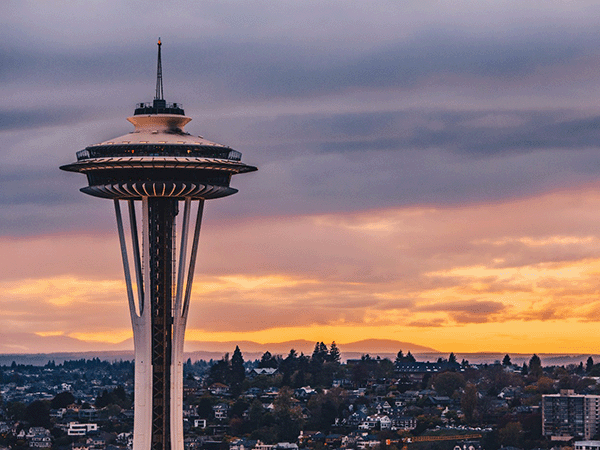
The Best Dog Trainers in Seattle, WA of 2025
This is a list of the top dog trainers in Seattle, WA, based on votes from the Sniffspot community and the general public.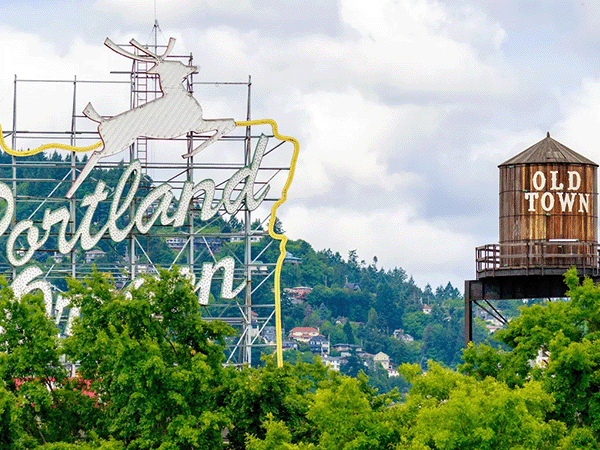
The Best Dog Trainers in Portland, OR of 2025
This is a list of the top dog trainers in Portland, OR, based on votes from the Sniffspot community and the general public.
The Best Dog Trainers in Los Angeles, CA of 2025
This is a list of the top dog trainers in Los Angeles, CA, based on votes from the Sniffspot community and the general public.
The Best Dog Trainers in New York, NY of 2025
This is a list of the top dog trainers in New York, NY, based on votes from the Sniffspot community and the general public.
City dog parks guides

Top 10 Indoor Dog Parks: A US Guide
Looking for a space to play with your dog no matter what the weather’s like outside? Look no further than our list of the best indoor dog parks in the United States! These climate-controlled spaces are growing in popularity as pet ownership increases throughout the country. As a bonus, many of them also offer dog training, boarding, grooming, or daycare services on the premises.

Best Dog Fields in the US: 25+ Wide-Open Spaces for Your Pup to Run Free
The best dog fields in the US offer something that traditional enclosed parks simply can't match: acres of open space where your pup can truly stretch their legs and run at full speed. From Colorado's 470-acre prairie meadows to Tennessee's award-winning "Outback," these wide-open spaces allow dogs to roam, explore, and exercise naturally while engaging instincts that cramped urban parks suppress.

Best Dog Parks in the US: Ultimate Guide to Public & Private Off-Leash Adventures
Is your pup giving you those pleading "let me run free" eyes? Whether you're a new dog parent or a seasoned pro looking for fresh adventures, finding the perfect off-leash paradise for your furry friend can feel ruff! From sun-soaked California beaches where your water-loving lab can make a splash to mountain trails in Vermont where your adventure buddy can chase every scent, we've sniffed out the 15 best dog parks across America.

Dog Parks Near Me: Las Vegas Edition
Looking for the perfect dog park near me in Las Vegas? You're in luck! This guide explores all the best options for your pup, from public dog parks to private dog parks near me on Sniffspot. We'll help you find the ideal spot for playtime, socializing, and fresh air. Plus, we'll cover essential etiquette and safety tips to ensure a happy visit for everyone. Get ready for some tail-wagging fun!

Top Sniffspot Locations: Find the Perfect Dog Park
Looking for the perfect dog park? Whether you need a wide-open public space or a private, fenced-in spot, this guide will help you find the best dog parks across the US. We'll cover top-rated public parks, the perks of private dog parks, and even explore Sniffspot locations – giving your pup a safe and fun place to play. Ready to find your dog's new favorite spot? Let's go!

Sniffspot: Portland's Best Private Dog Parks
Ready to discover Portland's best dog parks? Whether you're looking for a public park or the unique experience of a private Sniffspot, this guide has you covered. We'll help you find the perfect spot for your pup, with tips on what to bring, how to prepare, and even understanding dog body language. Plus, we'll explore some top Portland dog parks, including public and Sniffspot options, so you can plan your next dog-friendly adventure in the City of Roses.
Portland Dog Parks: Public & Private Options
This page is about public city dog parks and also includes Sniffspot private dog parks. Sniffspot is the largest network of private dog parks for rent in the world!
Small Dog Park Guide: Tips for Finding the Perfect Spot
Finding the perfect dog park for your small breed can be ruff! Big dog parks can be overwhelming, even dangerous, for little pups. This comprehensive guide helps you sniff out the best small dog parks for your pint-sized companion, covering everything from essential safety checklists to top recommendations for small dog parks across the US—including both public spots and private dog parks.
Dogs breeds

German Shepherd Dogs: Insights From Real Dog Owners
The German Shepherd Dog (GSDs) are known for their intelligence, loyalty, and striking appearance. They're also incredibly versatile, excelling as working dogs and devoted family companions. This guide covers everything you need to know about GSDs, from understanding their unique traits and rich history to practical advice on training and care. So, whether you're a seasoned GSD owner or just starting your research, let's explore this remarkable breed together.

Best Dog Fields in the US: 25+ Wide-Open Spaces for Your Pup to Run Free
The best dog fields in the US offer something that traditional enclosed parks simply can't match: acres of open space where your pup can truly stretch their legs and run at full speed. From Colorado's 470-acre prairie meadows to Tennessee's award-winning "Outback," these wide-open spaces allow dogs to roam, explore, and exercise naturally while engaging instincts that cramped urban parks suppress.

Labrador Retriever: Ultimate Guide by Owners
Discover the Labrador Retriever, a breed celebrated for its playful nature, affectionate temperament, and trainability. Labradors are known for their friendly demeanor and adaptability, making them perfect family companions and versatile working dogs. As one of the most popular types of retrievers, Labs are ideal companions for various lifestyles and are recognized by the American Kennel Club (AKC) as an excellent breed for families.

Golden Retriever Advice: The Complete Owner's Guide
Golden Retrievers: they're gorgeous, playful, and incredibly popular. But before you welcome one into your home, you need the right golden retriever advice. This guide draws on the wisdom of nearly 10,000 Golden Retriever owners, offering practical tips for caring for these affectionate dogs. From understanding their high energy levels to mastering grooming and training, we'll cover everything you need to know. So whether you're already a devoted Golden parent or just starting your research, get ready to learn how to give your furry friend the best possible care.

American Staffordshire Terrier: Your Complete Guide
Think American Staffordshire Terriers are tough? Think again. While their muscular build might intimidate some, these dogs are known for their playful and loyal personalities. This guide draws on the experience of nearly 10,000 AmStaff owners to reveal the truth about this often misunderstood breed. Want to learn more about caring for an American Staffordshire Terrier? You're in the right place.

Australian Shepherd Facts: Breed Info & Care Guide
Discover the Australian Shepherd, an AKC breed celebrated for its trainable, playful, and affectionate nature. Despite its name, the Australian Shepherd is actually a native breed to the United States, originally developed to breed on farms and ranches. Considered a medium dog, Australian Shepherds were bred for herding beginning in the 1950s. As one of the high-energy breeds, Aussies are known for their boundless energy and need for regular exercise, including aerobic exercise.

Essential Husky Facts for Owners: Breed Guide
Discover the Siberian Husky, a breed celebrated for its curious, intelligent, and loyal nature. Considered a medium-sized dog, Siberian Huskies were originally bred in Russia for sledding, beginning in the early 20th Century. Today, they're one of the most popular active breeds in North America.










